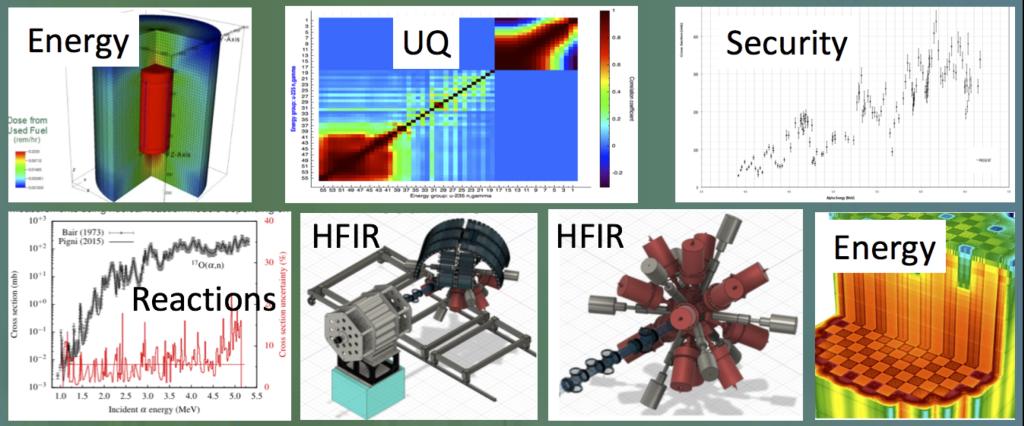
Multidisciplinary Efforts in Nuclear Data
There is a broader range of activities in nuclear data across many disciplines at ORNL. In additional to Nuclear Physics and Nuclear Astrophysics research, these include Nuclear Energy, Reactor Science, Criticality Safety, Radiation Shielding, Nuclear Security, and Nuclear Non-proliferation, Isotope Production, and Fusion Energy. This work has many sponsors, including DOE Office of Science, DOE Office of Nuclear Energy, NNSA, Nuclear Criticality Safety Program, and the Nuclear Regulatory Commission. There are, however, some common themes in these efforts, including Uncertainty Quantification (UQ), reaction expertise expertise, validation/verification, coding, and data libraries. Some of the major coding systems that ORNL is responsible for include the SCALE Code System for reactor physics, AMPX for dataset processing, and SAMMY for R-matrix analyses of experimental data.
While we have some inter-researcher collaborative efforts, we are now coordinating these broad range of data activities in order to add value to all nuclear data funding sent to ORNL. Our coordinating efforts are designed to: enhance communication and collaboration; share codes, methodologies, experience, expertise, contacts; coordinate our response to Funding Opportunity Announcements; discuss opportunities and share results; and launch major efforts that require multi-sponsor support.
One such major effort that would benefit nuclear physics, forensics, reactor science, isotopes, and other programs involves establishing a HFIR Decay Station (HDS) at ORNL’s High Flux Isotope Reactor (HFIR). Here, sophisticated gamma-, neutron-, and charged-particle detector systems in shielded rooms would enable the measurement of the decay properties of trans-actinides that are: (A) produced in HFIR by neutron bombardment and shuttled out to the detectors; (B) produced by the bombardment of neutrons extracted from HFIR; or (C) produced via secondary reactions of magnetically separated unstable nuclei. More details of this exciting opportunity will be forthcoming.

